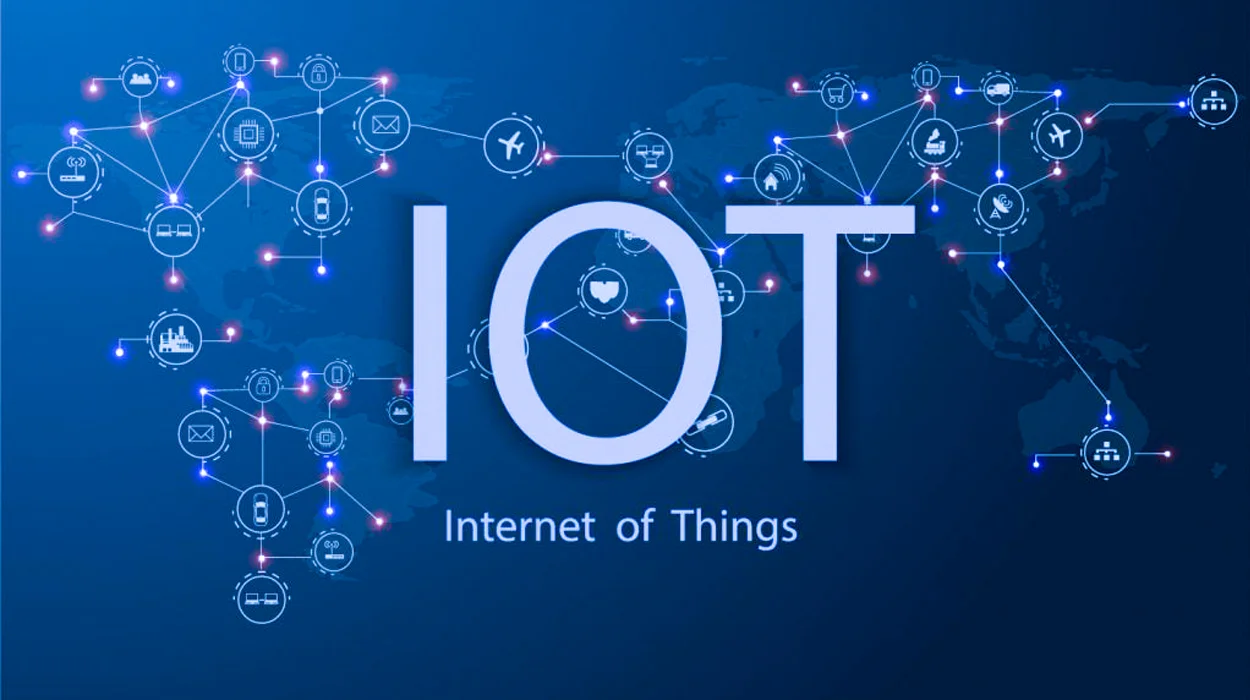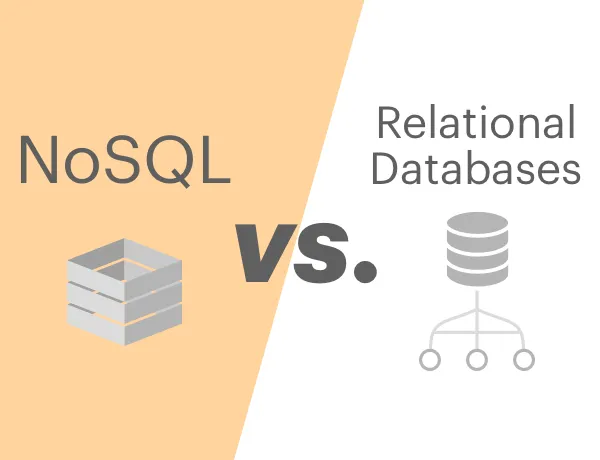IoT Integration in Mechanical Databases
In the realm of modern engineering, the integration of the Internet of Things (IoT) into mechanical databases has emerged as a transformative force, revolutionizing the way data is collected, analyzed, and utilized in the field. This integration holds immense potential for enhancing efficiency, reducing downtime, and optimizing overall performance in mechanical systems.
The integration process involves connecting physical devices, such as sensors and actuators embedded in machinery, to a network that enables them to communicate and share data. In the context of mechanical databases, this connection opens up new possibilities for real-time monitoring and control. Traditional databases often lack the capability to interact with the physical world, but with IoT integration, these databases can now tap into a wealth of real-world data.
IoT Integration in Mechanical Databases
One significant application of IoT integration in mechanical databases is predictive maintenance. By continuously monitoring the condition of machinery through sensors, the system can predict when components are likely to fail, allowing for proactive maintenance. This not only minimizes downtime but also extends the lifespan of mechanical assets, leading to significant cost savings for industries.
Additionally, IoT integration facilitates data-driven decision-making in mechanical engineering. The influx of real-time data from connected devices enables engineers to make informed choices about process optimization, energy efficiency, and resource allocation. This, in turn, contributes to a more sustainable and cost-effective operation of mechanical systems.
However, the integration of IoT into mechanical databases is not without its challenges. Security concerns, data privacy issues, and the sheer volume of data generated are significant considerations. Implementing robust cybersecurity measures is crucial to safeguarding sensitive information, and careful data management strategies are essential to derive meaningful insights from the vast amount of data collected.
IoT integration in mechanical databases heralds a new era for mechanical engineering. The ability to harness real-time data from connected devices empowers industries to achieve unprecedented levels of efficiency, productivity, and sustainability. As technology continues to advance, the integration of IoT in mechanical databases will likely become standard practice, reshaping the landscape of mechanical engineering in profound ways.
IoT Applications in Mechanical Engineering
The Internet of Things (IoT) has permeated various sectors, and its applications in mechanical engineering have been nothing short of revolutionary. From smart manufacturing processes to intelligent maintenance systems, IoT has unlocked a plethora of possibilities, ushering in a new era of efficiency and optimization in mechanical engineering.
One prominent application of IoT in mechanical engineering is in the realm of smart manufacturing, often referred to as Industry 4.0. IoT-enabled sensors and devices on the shop floor collect real-time data, providing insights into the production process. This data can be utilized to optimize manufacturing parameters, reduce defects, and enhance overall product quality. The integration of IoT in manufacturing also facilitates the concept of a digital twin, allowing engineers to create virtual replicas of physical systems for analysis and simulation.
In the context of mechanical systems, predictive maintenance stands out as a game-changer. Traditional maintenance practices are often based on fixed schedules, leading to either unnecessary downtime or, conversely, unexpected breakdowns. IoT applications in mechanical engineering enable the implementation of predictive maintenance, wherein sensors monitor the health of machinery and predict potential failures. This proactive approach not only minimizes downtime but also extends the lifespan of equipment, resulting in significant cost savings for industries.
Moreover, IoT plays a pivotal role in enhancing energy efficiency in mechanical engineering. By deploying sensors to monitor energy consumption and optimize usage, industries can reduce their environmental footprint and operational costs. This is particularly crucial in a global context where sustainability is a growing concern.
However, the widespread adoption of IoT applications in mechanical engineering is not without challenges. The integration of new technologies requires significant investments in infrastructure, training, and cybersecurity measures. Ensuring interoperability among different IoT devices and platforms is also a complex task that the industry must address for seamless integration.
the applications of IoT in mechanical engineering are diverse and transformative. From redefining manufacturing processes to enabling predictive maintenance and improving energy efficiency, IoT has become an indispensable tool for the modern mechanical engineer. As technology continues to advance, the integration of IoT will likely become even more pervasive, reshaping the industry and driving innovation to new heights.
Connecting IoT Devices to Mechanical Databases
The intersection of Internet of Things (IoT) devices and mechanical databases represents a critical juncture in modern engineering. Connecting IoT devices to mechanical databases opens up a realm of possibilities for real-time data analysis, predictive maintenance, and overall system optimization. This integration not only enhances the capabilities of mechanical systems but also paves the way for a more intelligent and responsive approach to engineering challenges.
The process of connecting IoT devices to mechanical databases begins with the deployment of sensors and actuators in mechanical systems. These devices, equipped with the ability to collect and transmit data, serve as the bridge between the physical world and digital databases. The data generated by these IoT devices, such as temperature, pressure, and vibration readings, is then fed into mechanical databases for analysis and storage.
One of the key benefits of connecting IoT devices to mechanical databases is the facilitation of predictive maintenance. The continuous monitoring of machinery through sensors allows for the early detection of potential issues. By analyzing the data stored in mechanical databases, engineers can predict when components are likely to fail, enabling proactive maintenance to prevent costly downtime and repairs.
Furthermore, this integration enables a holistic view of mechanical systems through data aggregation and analysis. By centralizing data from various IoT devices in mechanical databases, engineers gain a comprehensive understanding of the overall system performance. This, in turn, facilitates data-driven decision-making, allowing for optimizations in processes, energy consumption, and resource allocation.
However, challenges exist in the seamless connection of IoT devices to mechanical databases. Interoperability concerns, standardization of communication protocols, and the sheer volume of data generated are among the challenges that need to be addressed. Robust cybersecurity measures are also imperative to protect sensitive data transmitted between devices and databases.
Real-time Data Streaming in Mechanical Systems
In the dynamic landscape of modern engineering, the concept of real-time data streaming has emerged as a pivotal element, especially within mechanical systems. Real-time data streaming involves the continuous flow of data from sensors and devices embedded in machinery to a central system, providing instantaneous insights into the performance and condition of mechanical components. This capability has significantly transformed how engineers monitor, analyze, and respond to events within mechanical systems.
One of the primary advantages of real-time data streaming in mechanical systems is the ability to monitor operational parameters with unprecedented speed and accuracy. Traditional data collection methods often involve periodic sampling, leading to a potential lag in detecting anomalies or faults. With real-time data streaming, engineers can access up-to-the-moment information, enabling them to respond swiftly to changes in the system and implement preventive measures before issues escalate.
Predictive maintenance is a key application that benefits immensely from real-time data streaming. By continuously monitoring the health of mechanical components through sensors, the system can analyze patterns and detect subtle deviations from the norm. This proactive approach allows for the prediction of potential failures, optimizing maintenance schedules, and minimizing downtime. The result is increased operational efficiency and cost savings for industries that rely on the seamless operation of mechanical systems.
Real-time data streaming also facilitates the implementation of feedback loops within mechanical processes. As data is collected in real-time, it can be used to adjust and optimize various parameters, ensuring that the system operates at peak efficiency. This closed-loop system enhances the overall control and adaptability of mechanical processes, making them more responsive to changing conditions and requirements.
However, the implementation of real-time data streaming in mechanical systems comes with its set of challenges. The sheer volume of data generated in real-time can be overwhelming, necessitating robust data storage and processing capabilities. Additionally, ensuring the security and integrity of real-time data transmissions is crucial, especially in sensitive industries where system malfunctions or data breaches could have severe consequences.
real-time data streaming represents a transformative force in the realm of mechanical systems. The ability to access instantaneous insights into system performance revolutionizes how engineers approach monitoring, maintenance, and optimization. As technology continues to advance, the integration of real-time data streaming will likely become an integral part of mechanical engineering, driving efficiency and innovation across industries.
IoT Protocols for Mechanical Data Integration
The integration of Internet of Things (IoT) devices into mechanical systems requires robust protocols to ensure seamless communication and data exchange. These protocols serve as the language that allows different devices, sensors, and databases to interact cohesively, forming the backbone of an interconnected IoT ecosystem within mechanical engineering. Choosing the right IoT protocols for mechanical data integration is crucial for achieving interoperability, security, and efficiency.
One of the widely adopted IoT protocols in mechanical data integration is MQTT (Message Queuing Telemetry Transport). MQTT is a lightweight and efficient publish-subscribe protocol that excels in scenarios where low bandwidth and high latency are factors. This protocol is particularly suitable for applications where real-time data updates are essential, making it a popular choice in monitoring and control systems within mechanical engineering.
CoAP (Constrained Application Protocol) is another IoT protocol gaining traction in mechanical data integration, especially in resource-constrained environments. CoAP is designed for simplicity and efficiency, making it well-suited for devices with limited processing power and memory. Its RESTful architecture facilitates communication between devices and supports the integration of IoT devices into web-based applications, enhancing the accessibility of mechanical data.
For applications requiring more extensive data exchange and advanced security features, AMQP (Advanced Message Queuing Protocol) is a viable option. AMQP is a robust, open-standard protocol that enables reliable messaging between devices in a distributed system. Its features, such as message queuing and routing, make it suitable for scenarios where data integrity and delivery assurance are critical, such as in complex mechanical processes.
While these protocols address various requirements in mechanical data integration, the choice depends on the specific needs of the application. Interoperability is a key consideration, and protocols like OPC UA (Object Linking and Embedding for Process Control Unified Architecture) are designed with a focus on standardization, providing a framework for seamless integration across different devices and platforms.
The benefits of selecting the right IoT protocols for mechanical data integration are manifold. Efficient communication ensures that data flows seamlessly between devices, enabling real-time monitoring, control, and analysis. Interoperability between different devices and systems fosters flexibility and scalability, allowing for the integration of new technologies and devices as the mechanical system evolves.
However, challenges exist in the diverse landscape of IoT protocols, such as ensuring compatibility, addressing security concerns, and managing the complexity of diverse communication standards. As the field of IoT continues to evolve, standardization efforts and the development of more advanced protocols will likely play a crucial role in overcoming these challenges, further enhancing the integration of IoT devices into mechanical systems.
selecting the right IoT protocols for mechanical data integration is a critical aspect of building a robust and efficient IoT ecosystem. The choice of protocols influences the interoperability, security, and overall performance of interconnected devices within mechanical systems. As technology advances, the standardization and evolution of IoT protocols will continue to shape the landscape of mechanical engineering, enabling smarter, more connected systems.
Benefits of IoT Integration in Mechanical Processes
The integration of the Internet of Things (IoT) into mechanical processes has ushered in a new era of efficiency, productivity, and innovation. This integration involves embedding sensors, actuators, and other IoT devices into mechanical systems, creating a network of interconnected components that can communicate, collect data, and optimize operations. The benefits of IoT integration in mechanical processes are diverse and impactful, shaping the future of how industries approach manufacturing, maintenance, and overall system management.
One of the primary advantages of IoT integration in mechanical processes is the enhancement of predictive maintenance. Traditionally, maintenance activities were scheduled based on fixed intervals, leading to either unnecessary downtime or, conversely, unexpected failures. With IoT, sensors continuously monitor the health and performance of mechanical components in real-time. This enables the prediction of potential issues and the scheduling of maintenance activities precisely when needed, minimizing downtime, reducing costs, and extending the lifespan of equipment.
Efficiency gains are another significant benefit of IoT integration in mechanical processes. The data collected by sensors throughout the manufacturing or operational cycle provides insights into the performance of machinery and processes. This data can be analyzed to identify bottlenecks, optimize workflows, and improve overall efficiency. Real-time monitoring allows for immediate adjustments, ensuring that systems operate at peak performance levels.
The concept of the digital twin is a direct outcome of IoT integration in mechanical processes. A digital twin is a virtual replica of a physical system, created by continuously collecting and analyzing real-time data from IoT-enabled devices. This virtual representation allows engineers to simulate and analyze different scenarios, test modifications, and optimize processes without affecting the physical system. Digital twins contribute to better decision-making, reduced risks, and improved design iterations.
Energy efficiency is a critical consideration in the current global landscape, and IoT integration plays a pivotal role in achieving sustainability goals. Sensors and actuators can monitor energy consumption in real-time, allowing for precise control and optimization of energy usage. By identifying and addressing inefficiencies, industries can reduce their environmental footprint and operating costs, aligning with the growing emphasis on sustainable practices.
Furthermore, IoT integration in mechanical processes facilitates the creation of smart manufacturing environments. The interconnected nature of devices enables a high degree of automation, where machines can communicate and make decisions based on real-time data. This not only streamlines production processes but also enables adaptive manufacturing, where systems can respond to changing demands and market conditions in real-time.
However, the widespread adoption of IoT integration in mechanical processes is not without its challenges. Security concerns, data privacy issues, and the complexity of managing large volumes of data are significant considerations. Implementing robust cybersecurity measures, ensuring data encryption, and establishing secure communication protocols are essential to mitigate these challenges and build trust in the integration of IoT into mechanical processes.
the benefits of IoT integration in mechanical processes are transformative and multifaceted. From predictive maintenance and efficiency gains to digital twins and sustainable practices, the integration of IoT technologies reshapes how industries approach mechanical engineering. As technology continues to advance, the full potential of IoT integration in mechanical processes will likely unfold, driving continuous innovation and optimization across various sectors.
connecting IoT devices to mechanical databases represents a paradigm shift in how engineers approach the monitoring, maintenance, and optimization of mechanical systems. The synergy between the physical and digital realms enhances the efficiency and responsiveness of engineering processes. As technology continues to evolve, the seamless integration of IoT devices with mechanical databases will likely become a cornerstone of modern engineering practices, driving innovation and efficiency across industries.










